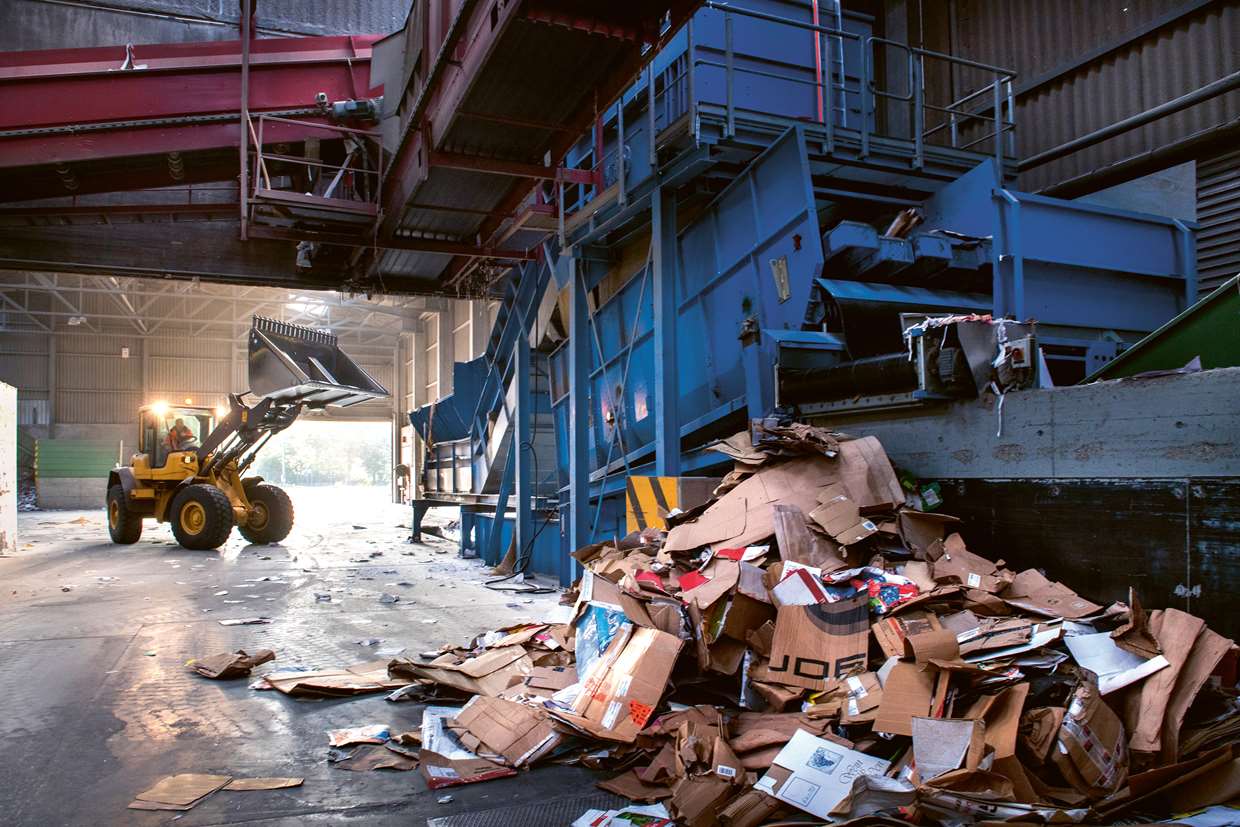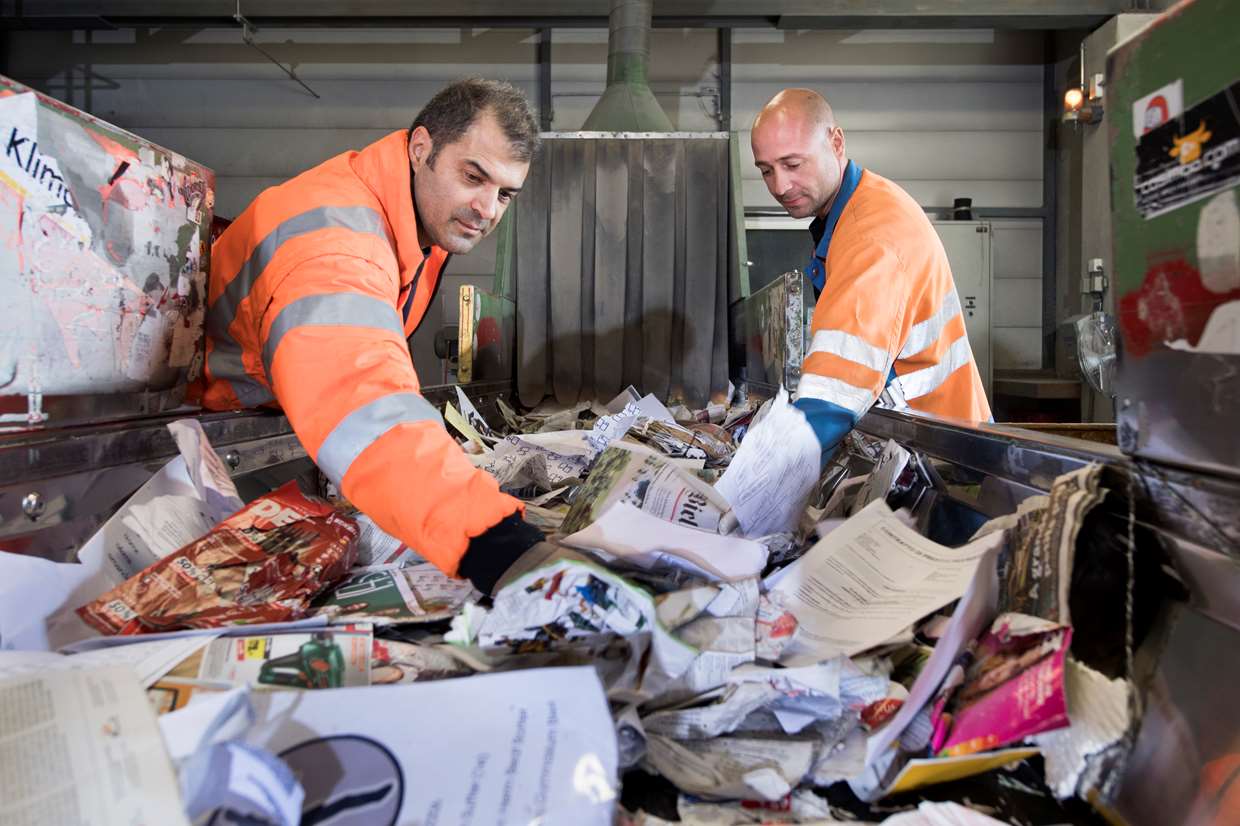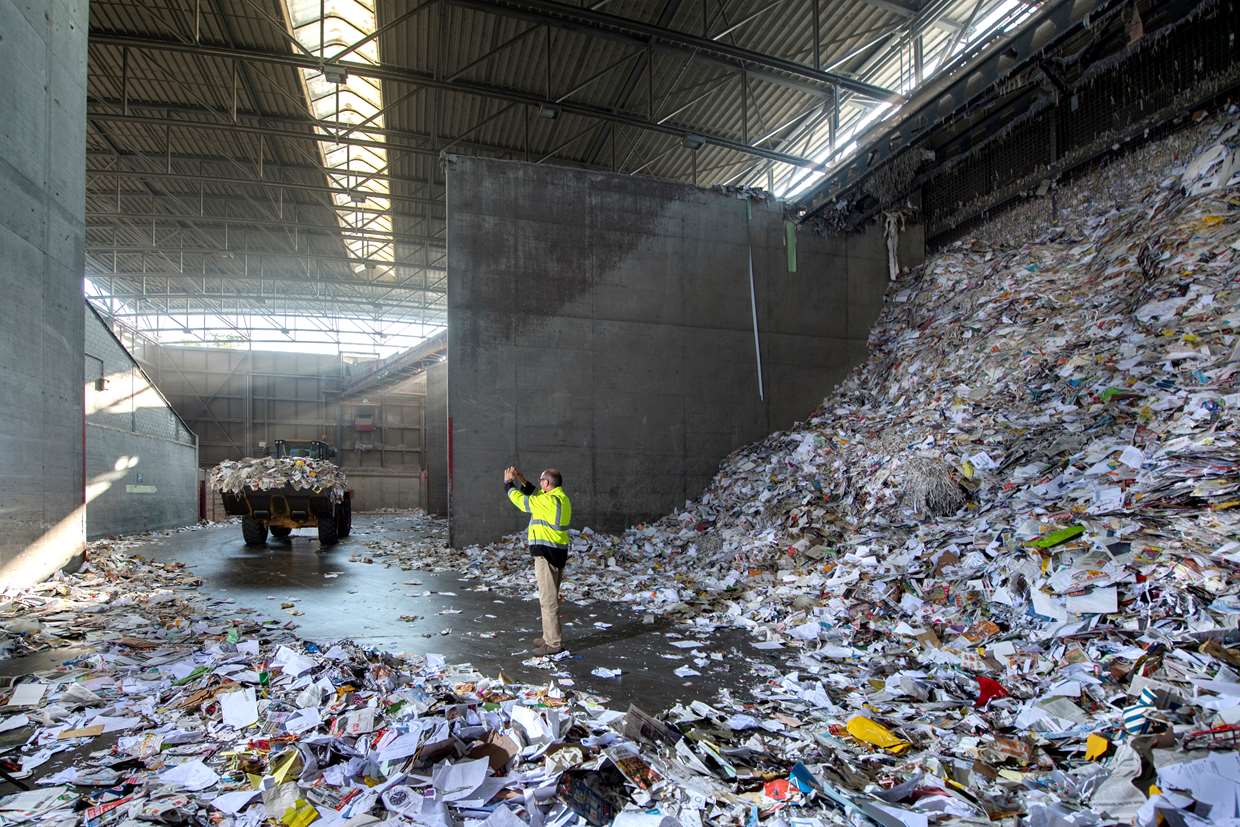Success stories
Perlen Papier takes over the Utzenstorf waste paper sorting facility
In January 2018 Perlen Papier takes over the recovered paper supplies previously delivered to Papierfabrik Utzenstorf. Perlen Papier will continue to operate the Utzenstorf waste paper sorting facility.

A ballistic separator for broadly sorting recovered cardboard from paper.

The remaining cardboard is manually removed.

Sorted recovered paper awaiting onward transport.
Perlen Papier now takes delivery of some 500 000 tonnes of recovered paper a year, largely from private households, printing companies and offices in Switzerland. Paper is a valuable commodity. Over 80% of waste paper is recovered in Switzerland, while the average recovery rate for Western Europe is just over 70%.
In Switzerland waste paper is either collected from the kerbside at specific times or taken by its owners to waste disposal centres. For the municipalities in the Utzenstorf area, Perlen Papier provides special collection containers. While the cardboard industry also processes recovered paper, the paper manufacturing sector requires a waste paper product that is as free of waste cardboard as possible, since the brown card makes it harder to supply the resulting newsprint and magazine paper products in the whiteness desired.
Waste paper and cardboard are generally collected separately in Switzerland. But in many communities, especially in Western Switzerland, paper and cardboard end up in the same container. Three-quarters of the resulting mix tends to be paper and one-quarter cardboard. But this mixed collection product needs to be sorted and freed of foreign objects before it can be processed further.
“We separate about 120 tonnes of paper and cardboard a day,” says Jürg Schluep, general manager of the Utzenstorf waste paper sorting facility. It’s a two-step process. First the larger pieces of cardboard are taken out in a ballistic separator. This process removes around three-quarters of the cardboard in any mixed-collection mass. What is left is then sorted out by hand. “You can’t imagine what gets put in with the waste paper!” Schluep says. Plastic, tin cans, glass bottles, aluminium cans, waste food, even electrical devices: he has seen it all.
Once the sorting is over, cardboard will make up only a small percentage of the waste mass left. The recovered paper is now ready to be processed into new publication paper at the Perlen factory. The recovered cardboard, meanwhile, is compressed into bales and then recycled in the cardboard manufacturing industry.
